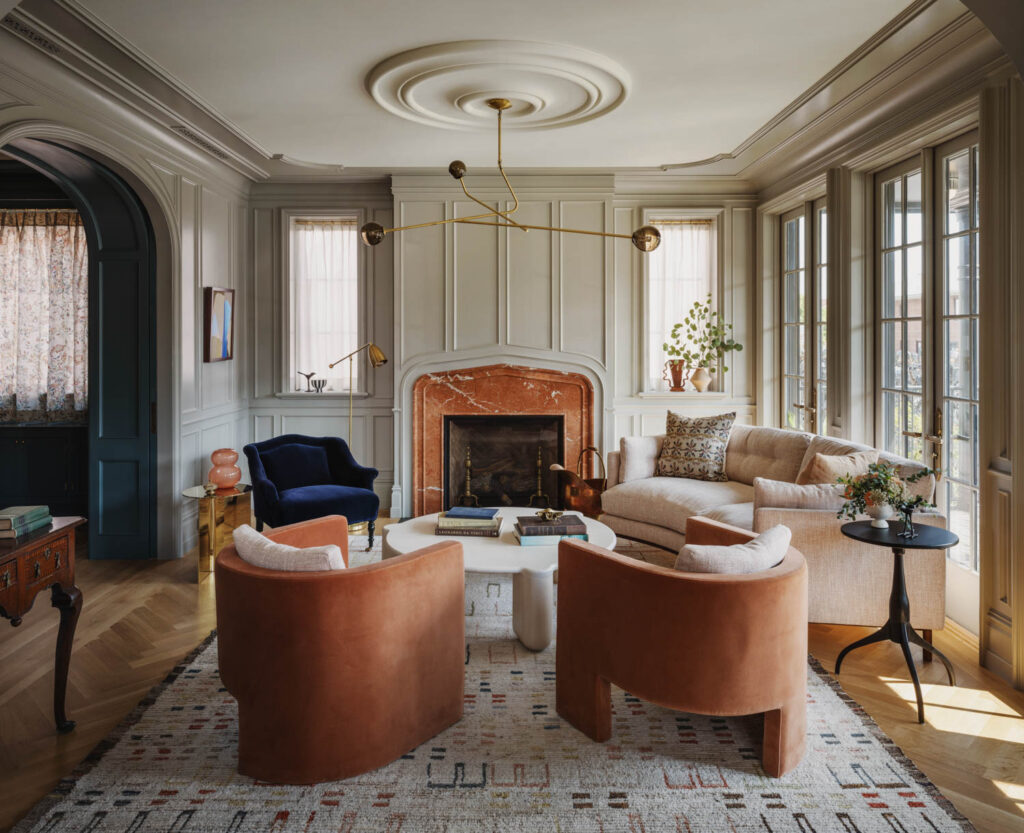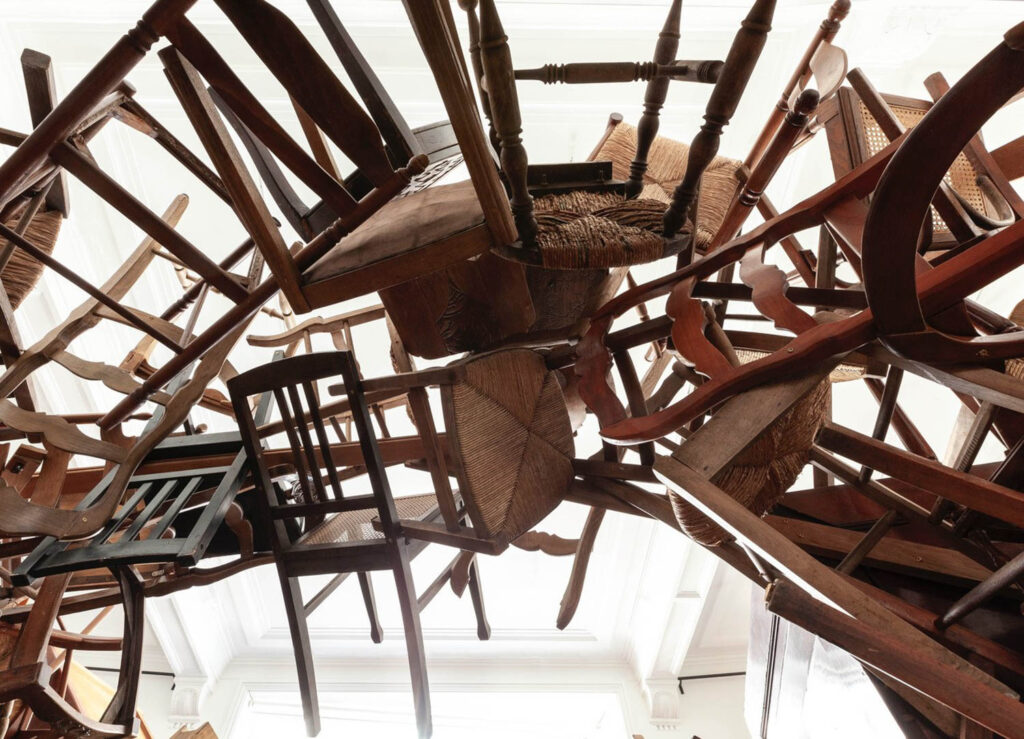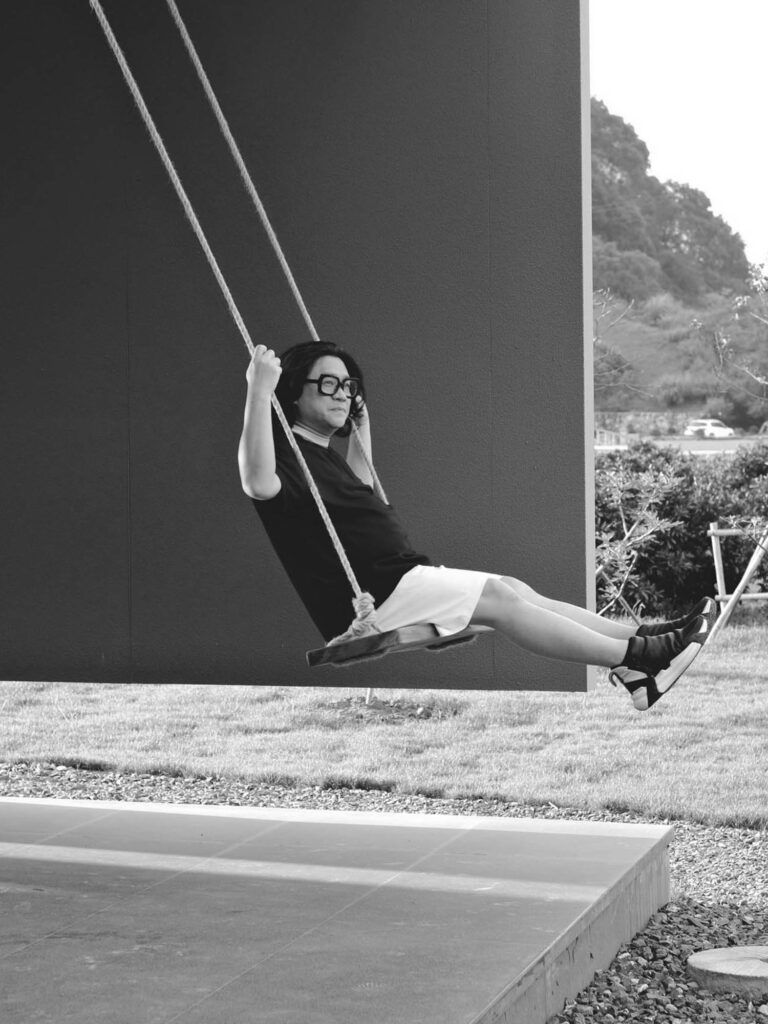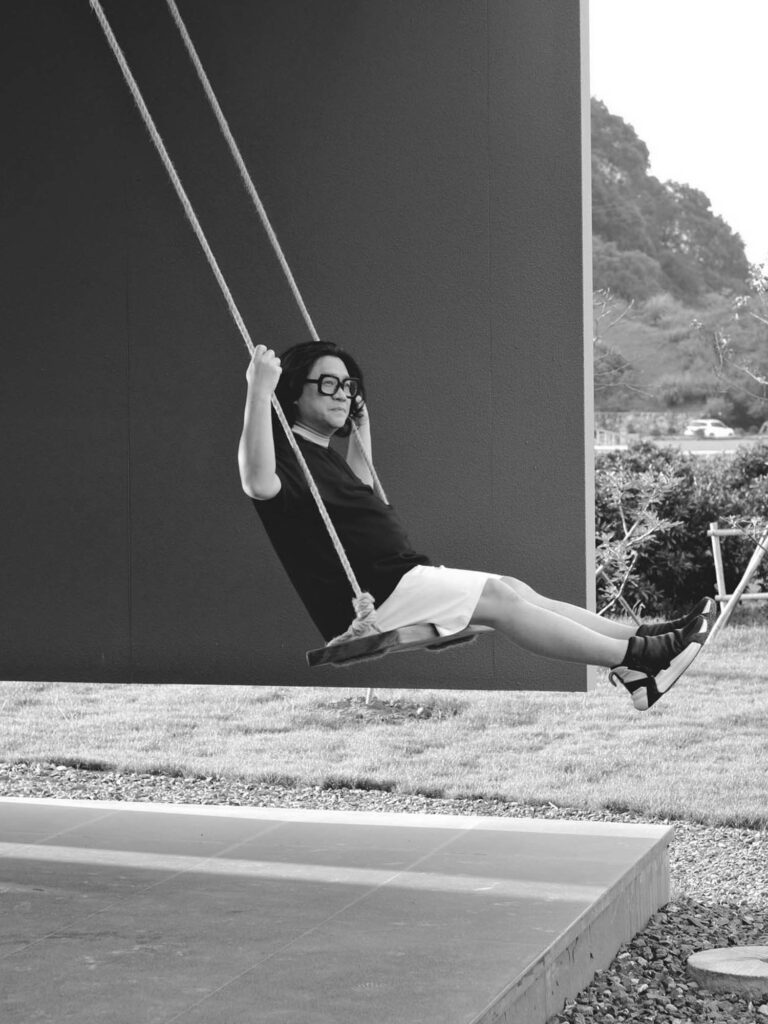
10 Questions With… Louis Durot
A chemist may call to mind a person who dons protective glasses and a white lab coat. Or perhaps it conjures images of bubbling test tubes. But Louis Durot, renegade artist and designer, invites a different depiction. Here, the Paris-born creative, now in his 80s, poses with his otherworldly creations in a relaxed stance. Palms draped over knees, jeans, stylish sneakers. Throughout his decades-long career, his knowledge of organic chemistry has been a creative asset, giving Durot confidence to push materials to their limits, designing wildly original forms.
His scientific background, which he honed after studying math in the early 1960s, also served as his introduction to the world of art and design, enabling him to connect with artists seeking input on material innovation and technology. As his creative network grew, so did his desire to shape a new path, melding science and art. Working closely with prominent artists in the late ’60s—notably, he assisted French sculptor César—Durot began cultivating new ways of working with polyurethane foam, aiming to make the material more stable and shapeable, leading to his first three-dimensional sculptures in the medium. Soon, Durot established his own studio in Paris and began exhibiting his work.
Coming into his own as an artist, Durot let his imagination guide his designs, creating more than 60 sculptures in the ’70s. These reflect his vast interests from alien life to carnivorous plants, and other nature-inspired forms. As his career evolved, so too did Durot’s influences. Looking to the human anatomy, he later created a series of erotic chairs in the realm of Pop.
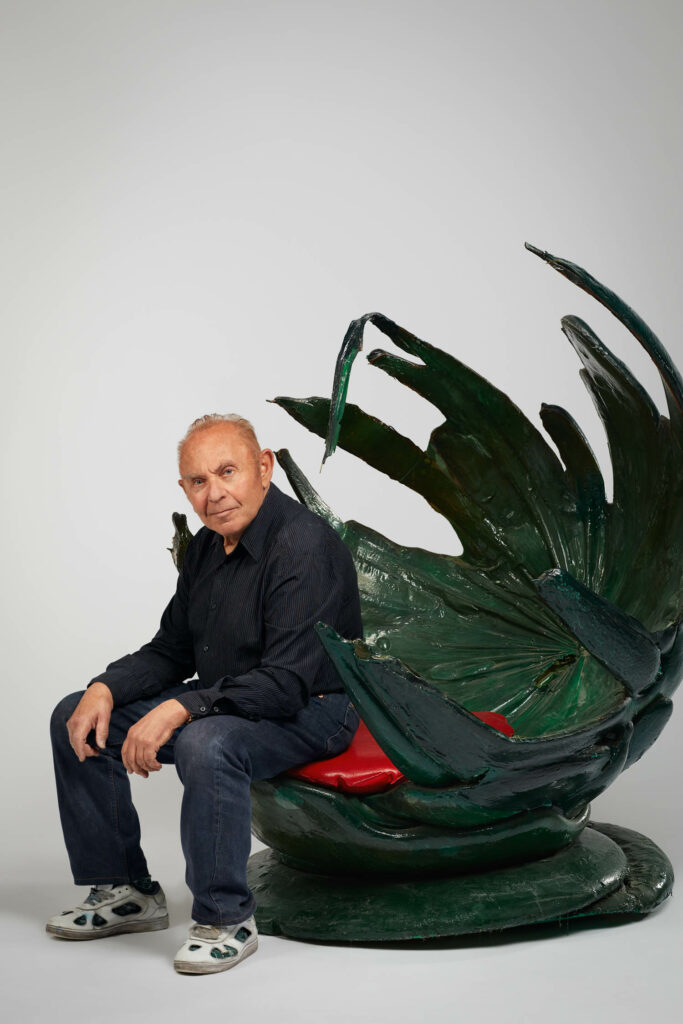
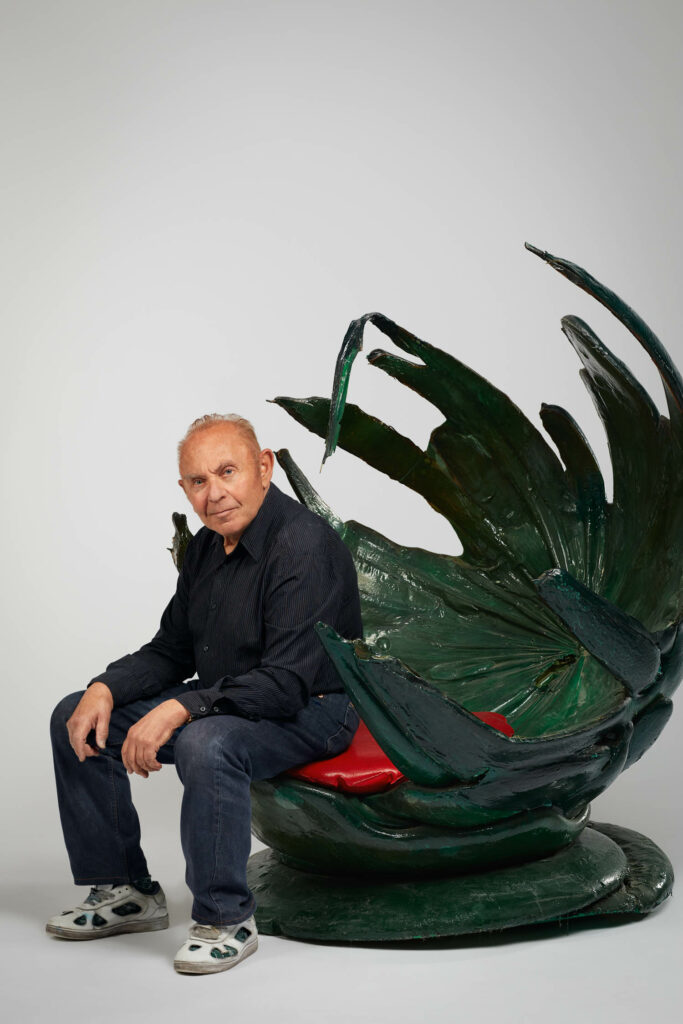
Durot’s ability to seemingly suspend material in thin air is one of his signature styles. The Spiral chair, which winds around itself ribbonlike, is a prime example of this. It’s part of the Vitra Design Museums’s online collection and counts Kelly Wearstler among its admirers. She has a Spiral chair in her California home, along with one of Durot’s mirrors.
Currently, Durot’s work is on display in an exhibition called “Forme et non-conformisme” ongoing through February 4, 2023, at the Galerie ChinArts–Fanny Jacquemaire in Paris. The exhibit features seven versions of the Spiral chair conceived in a variety of shapes, colors, and materials as well as other works.
In this interview, Durot talks about the evolution of his whimsical forms, his upcoming autobiography, and advice gleaned from a brief run-in with Picasso.
Louis Durot on His Design Philosophy, and More
Interior Design: When did you first become aware of design and the power of designed objects?
Louis Durot: I first discovered it while visiting villas in the South of France, which were not furnished with real or fake antiques like Parisian bon chic bon genre apartments, but with Art Deco furniture, which was in a way the forerunner of 1930s design. Later, my artist friends from the ’60s reintroduced me to design with its anti-establishment character.
ID: What led you to study chemical engineering? Did you ever imagine chemistry opening doors to the art and design world?
LD: What motivated me to do this was precisely the desire to help my artist friends, who understood, in the climate and intelligence of the time, that contemporary art would be made by taking advantage of the aesthetic contributions of materials and contemporary technology. I wanted to help them, and to do that I wanted to know what could be done with materials. I began to study them, and then, while I was working as an engineer for a nuclear metrology company that needed new materials to improve its measuring instruments, the head of the company paid for me to take a course in polymers so that I could help him with his research.
Chemistry opened the door to relationships with my artist friends. Then, talking to some of them, who were artists but also theoreticians, like Pierre Restany, André-Pierre Arnal or César, I understood that it was not only the material of contemporary art, but also a material that opened new doors to art itself. My artist friends convinced me that this was a path worth exploring.

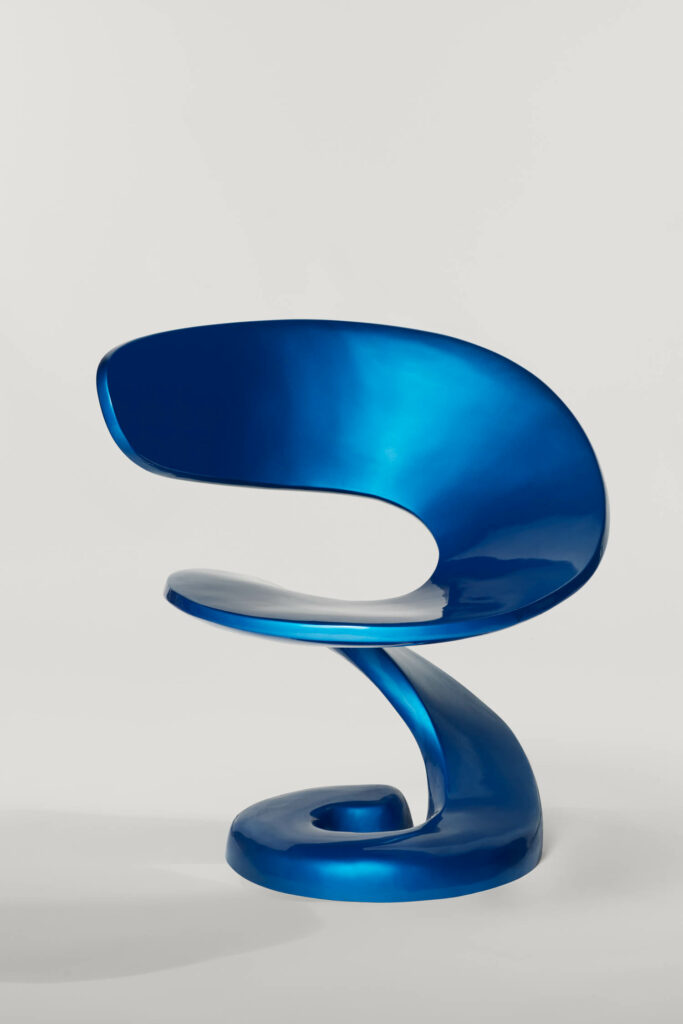
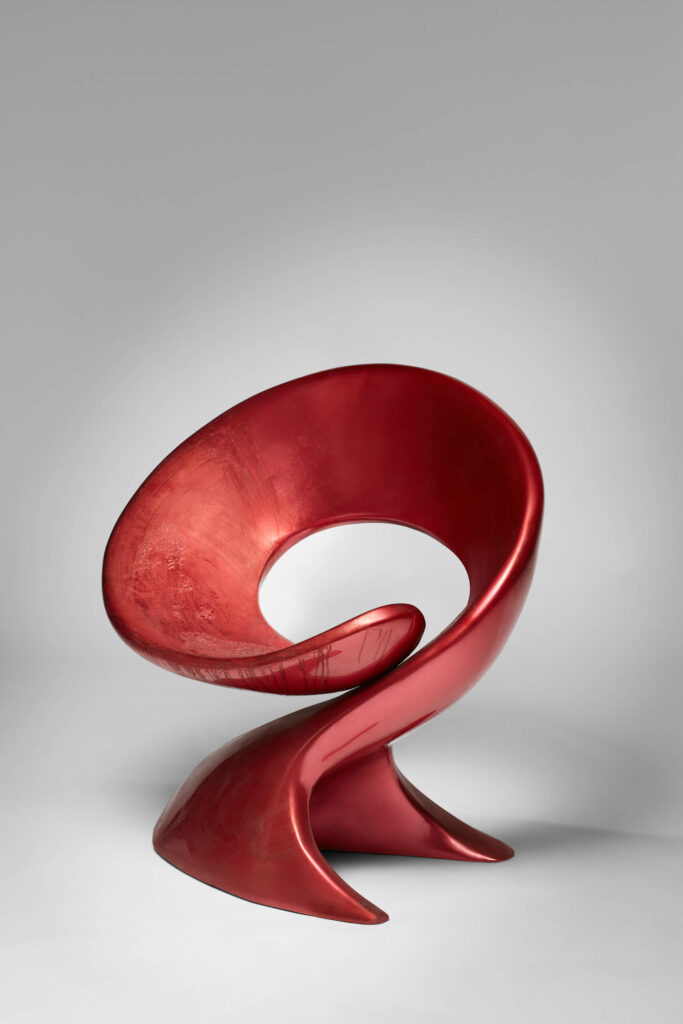
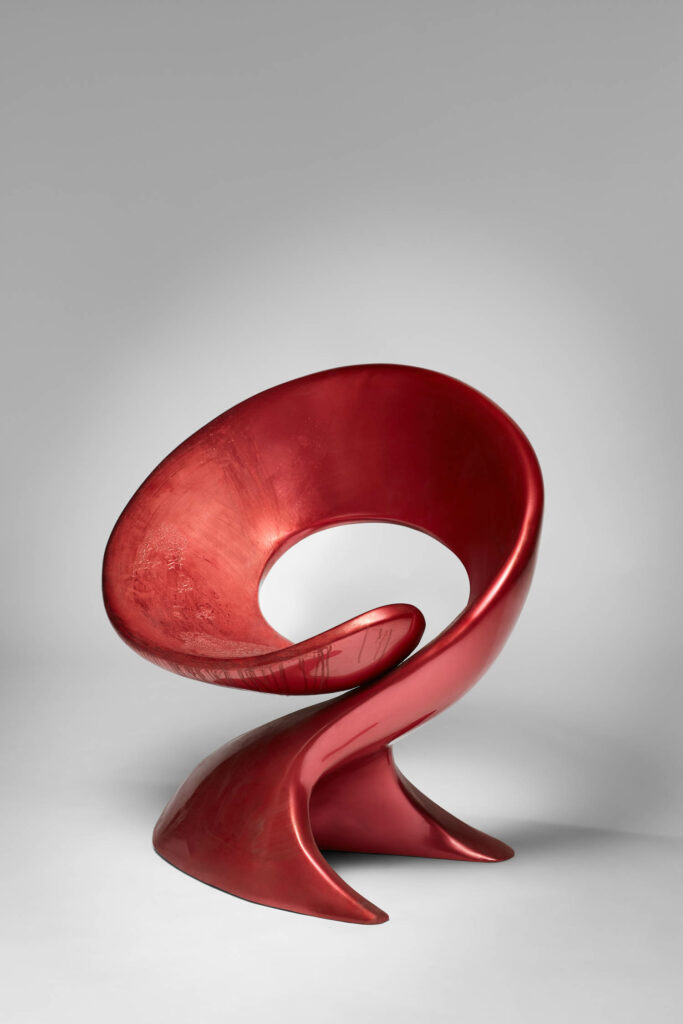
ID: What materials/material innovations are you most excited about in the moment?
LD: One of the materials I’m most excited about now is a transparent, hard, and flexible material that can be used with simple means to create large scale transparent or colored transparent objects, with a combination of strength and flexibility that allows shapes to be created that are not possible with other materials such as glass.
ID: Your furniture designs reflect a playful spirit. Where does your creative process typically start?
LD: Describing a process is a rather complex psychological and philosophical problem. In my case, it starts with my imagination. I first create forms and principles in my mind, in the manner of a virtual reality. I imagine forms that are necessarily extraordinary, and then I look for material means by which these forms can become real. I try to make the dream come true. I don’t always succeed; there are extraordinary works in my mind that I haven’t yet found the technical means to realize.
ID: You created many sculptures that explore extraterrestrial life in the ‘70s; why did you gravitate to this topic at that time?
LD: For me, there was a dreamlike dimension to it. I was interested in trying to create an alien world, a fantastic world, through furniture sculpture, which for me is the creation of a fantastic object.
ID: Having worked closely with artists like César and alongside figures such as Niki de Saint-Phalle, Pierre Restany, and Arman, how have collaborations influenced your design philosophy?
LD: My artistic and design philosophy was conceived in dialogue with them because we had the same philosophy, although they realized it in different forms. In our work, we revealed the poetic dimension of contemporary materials. I explored a fantastic and playful dimension, others revealed a metaphysical dimension like Arman, or a protest dimension like Niki de Saint Phalle, or an ironic one like Tinguely. French Pop Art was a Pop Art of three-dimensional objects, searching for the new poetry and philosophical reality behind the objects and materials that surround us.


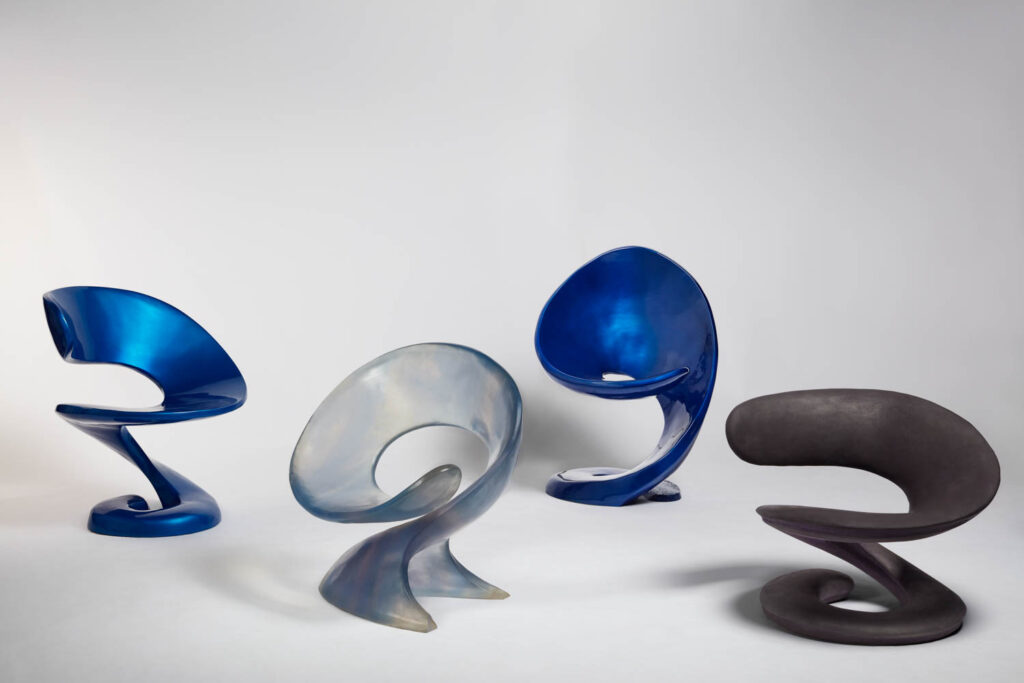
ID: The exhibition “Forme et non-conformisme” features seven versions of your Spiral chair in various shapes, colors, and materials. Can you discuss the evolution of this design and its significance in your body of work?
LD: This model, which is my iconic model, is important because, paradoxically, it has a sensual dimension, it doesn’t impose a fixed position. The Spiral is a little transgressive and a little fantastical because you must know it’s a seat to use it. When it was first exhibited on a pedestal in Miami, people thought it was an abstract sculpture and had no idea it was a chair. Above all, Spiral has a playful dimension that children immediately understand.
ID: The release of your autobiography, “I missed the train for Auschwitz” also is coming up. What prompted you to share your life’s story at this moment?”
LD: Mostly because people have asked me to tell them things that I wasn’t particularly interested in telling myself. The paradox of my life is that I’ve never been interested.

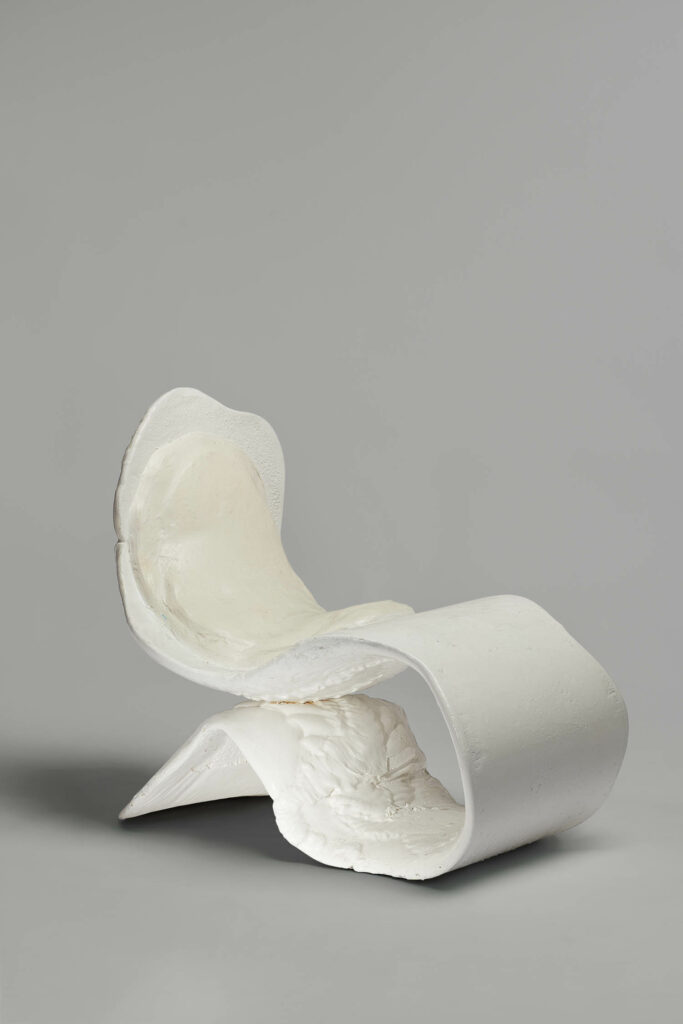
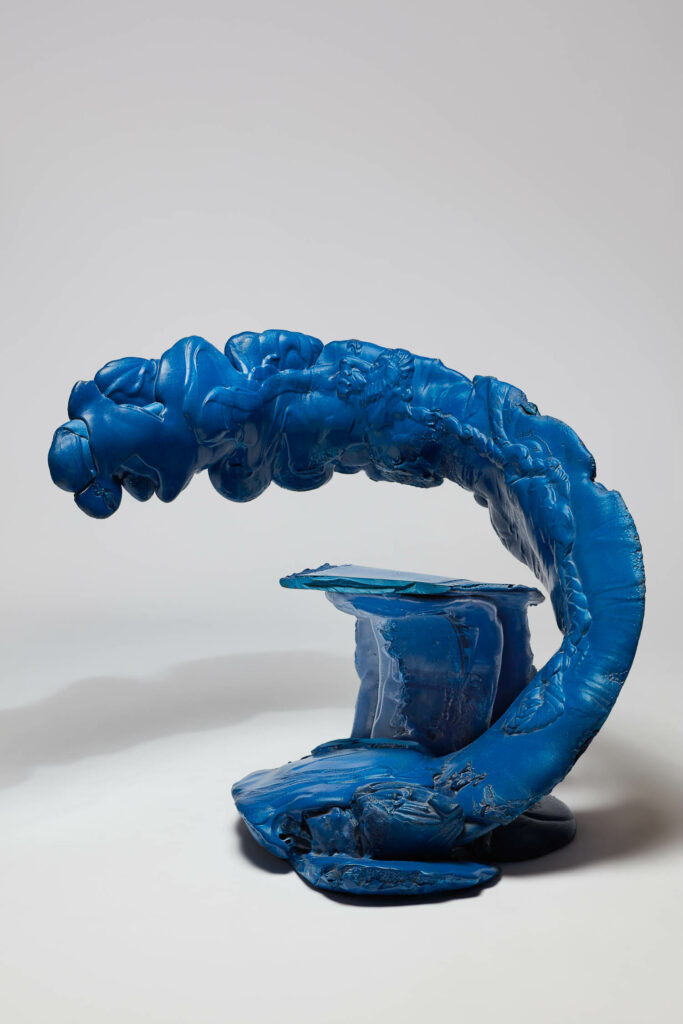
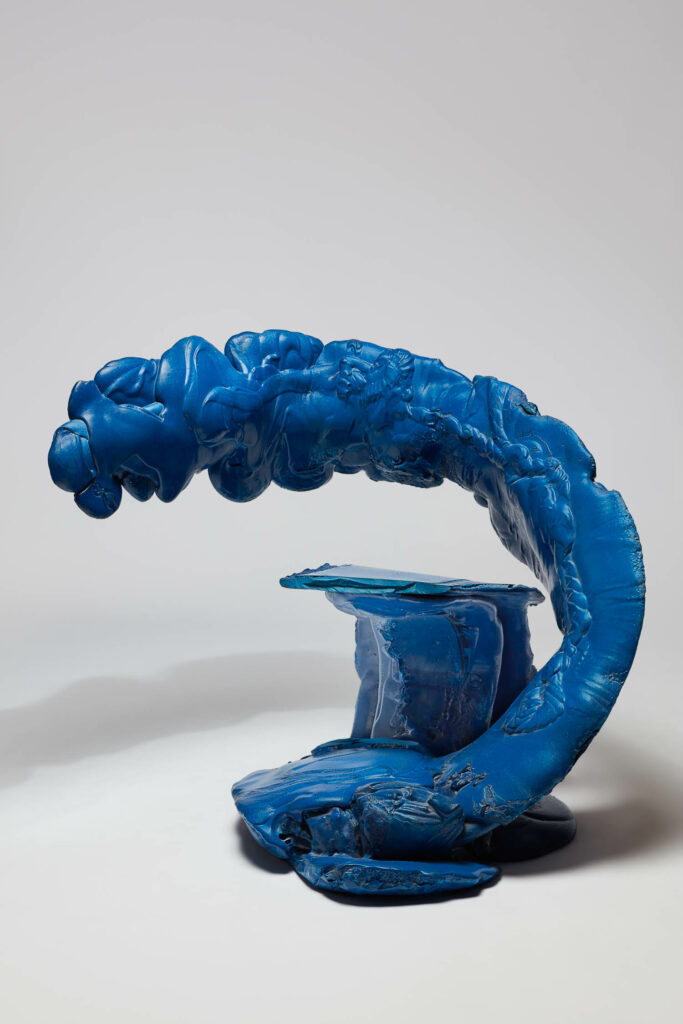
ID: Any hints about what we can look forward to in your autobiography? Will we find a story or two about encounters with Picasso?
LD: My meeting with Picasso was very intense but very short. I asked him what an artist was, and he replied that for him an artist was a craftsman with ideas. So, I asked him what he did when he had no ideas. He replied: “When I don’t have any ideas, I sit down in front of the canvas and work.”
ID: You’ve accomplished so much in your life and career. What’s next?
LD: I still have an attainable ambition: to leave some maxims in the realm of philosophy that might be useful to other artists. One of Restany’s maxims, for example, determined my future. I read it in his account of design during the Pop years. “Design, as a branch of sculpture, has become an important art form,” he wrote. In my philosophical writings, I’d like to say something like Alan Turing, who claimed that organization can be born out of chaos.
recent stories
DesignWire
10 Questions With… Jessica Helgerson
Jessica Helgerson discusses her new lighting collection with Roll & Hill, some favorite projects, opening a Paris branch of her eponymous firm, and more.
DesignWire
10 Questions With…. Tadashi Kawamata
Get to know Japanese artist Tadashi Kawamata who created a surreal installation for the facade of French design firm Liaigre’s Paris mansion in the fall.
DesignWire
Who’s Who in Design? Read Our Top Interviews of 2023
From seasoned professionals to emerging talents, we’ve rounded up the 10 most-read design interviews of the year, spotlighting industry creatives.

